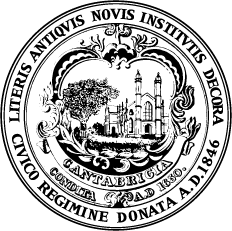The Water Department recently published its updated Fresh Pond Census Report, offering a detailed analysis of how and when people use Fresh Pond Reservation, along with access to the underlying data. Fresh Pond Reservation exists to protect Fresh Pond Reservoir, which is the City’s water supply. Alexandra Epstein, from the Open Data team, spoke with Jamie O’Connell and Anna Van Dreser, the report’s authors, to learn more.
Automated counting of Fresh Pond users began in 2011, but before then – and since then at many times – the Water Department has conducted manual clipboard counts, which are very accurate but very labor-intensive, and can only be done rarely and for short time spans. "We want to have accurate information about how many people are visiting Fresh Pond, and which entrances and exits they are using, to advocate for the resources we need, and to give every user the experience they deserve” says O’Connell.
To this end, the Water Department has installed while respecting individual privacy. These sensors anonymously count the number of passing people or animals over three feet tall, using the same technology as motion-activated lights or other motion detectors. This map shows where the sensors are located:

Looking at all of the data the Water Department has collected and analyzed over the years, one of the most striking trends is due to COVID: after years of consistent use, March 2020 saw an explosion of usership at Fresh Pond. In fact, 2020 saw an increase in use of 1.2 times the population of the entire city of Cambridge. If you used the space during that time, you might have noticed that the perimeter road – the path around the pond – was changed to a one-way path in order to help with the crowds. This measure, in addition to plenty of education in the form of signage and the constant presence of the Fresh Pond rangers and other staff, kept everything running smoothly throughout the pandemic.

Since 2020, usership at Fresh Pond has decreased, but it remains well above the pre-pandemic baseline. There are several possible explanations for this, including milder winters, more development in the area (and therefore more people living there now), the new bike path that goes right by, or people getting hooked on all that Fresh Pond has to offer. Indeed, O’Connell and Van Dreser have compared Community Development Department open data on housing development with Fresh Pond census data, and have found that the Fresh Pond entrances near more development (Lusitania and Community Garden entrances specifically) are trending up even more than other entrances. Since the Census Report, the Water Department has added a new censor at the crosswalk that crosses from the Dunkin’ between the two rotaries over to Fresh Pond in the hopes of gathering more data from the side of the pond where the development is heaviest.
Having access to data like these can help the Water Department better protect the water supply, plan its staffing, budget, events, and more. They inform many of its large and small decisions on the running of Fresh Pond Reservation. And seeing trends like the pandemic rise in usership at Fresh Pond, says O’Connell, really means a lot. “It emphasized how lucky we were to have that space” when lives shut down, she says. “We’re grateful that Fresh Pond was there to offer it to the City in a time of tremendous need.”
Fresh Pond Census Report
Raw Data on the Open Data Portal

